
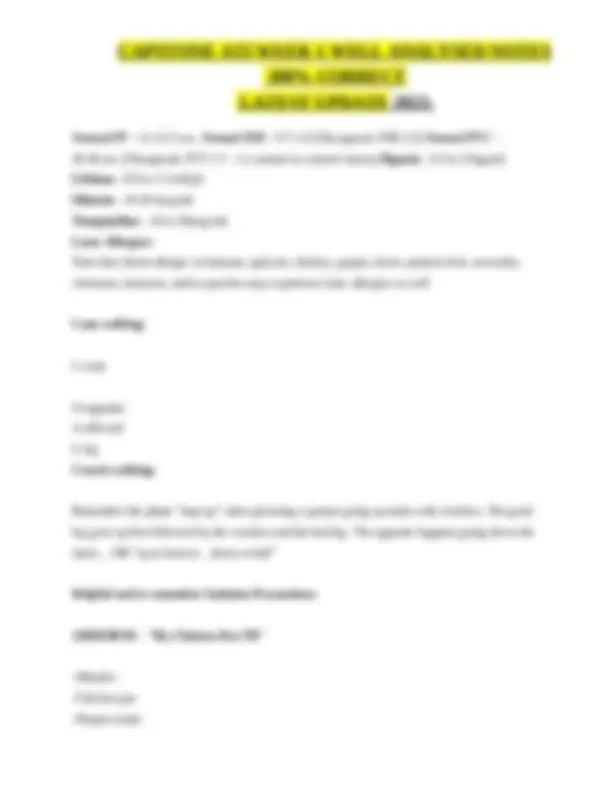

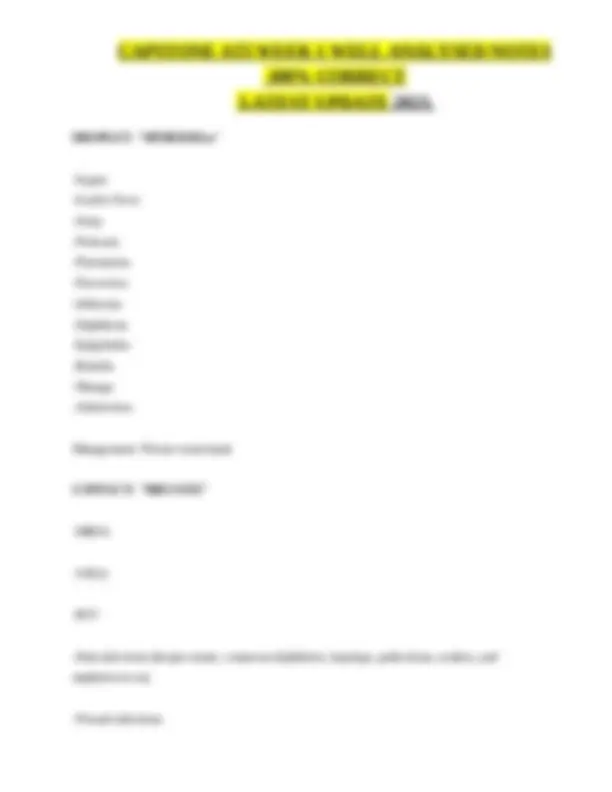
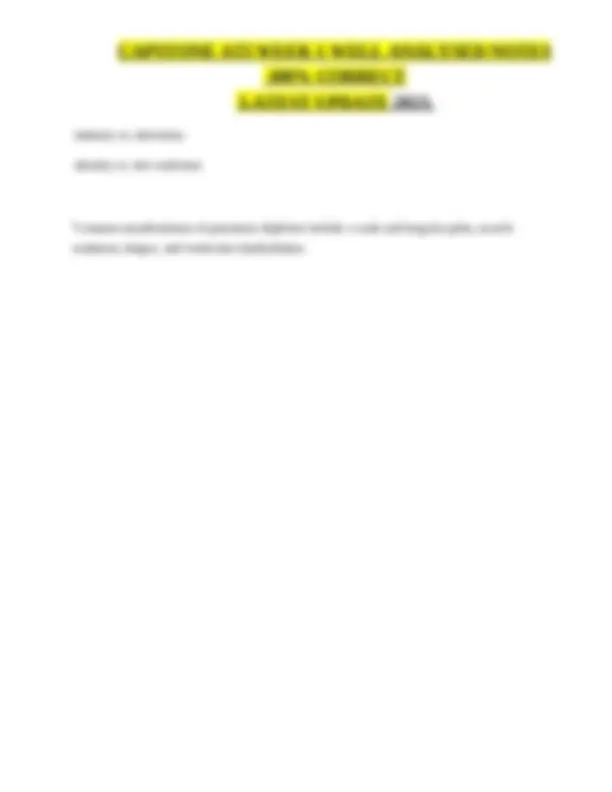

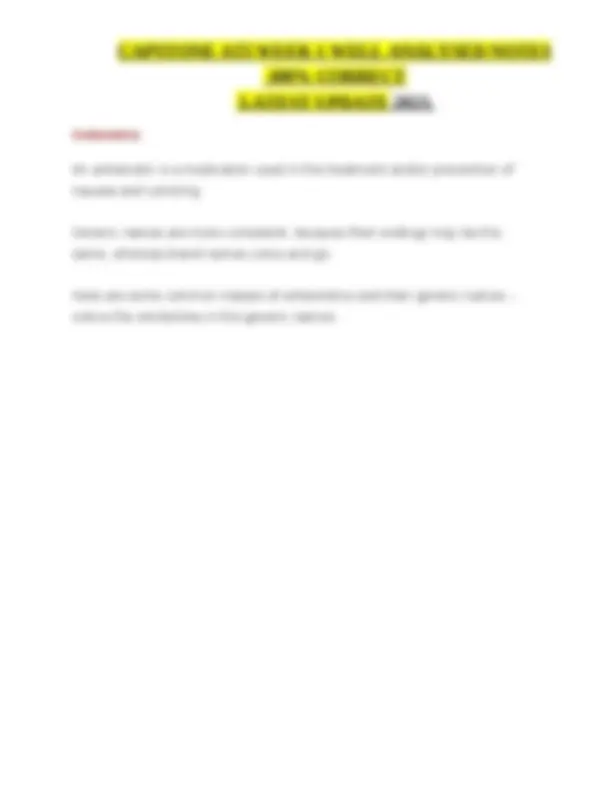
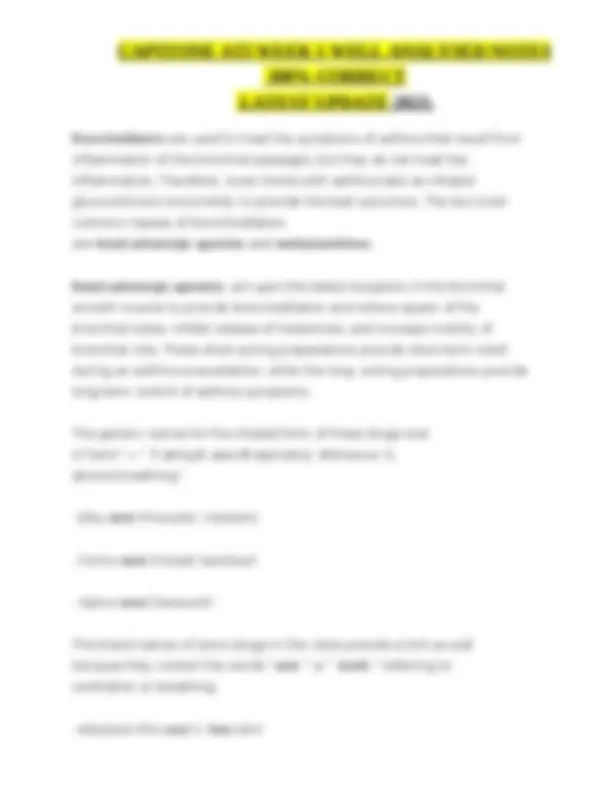
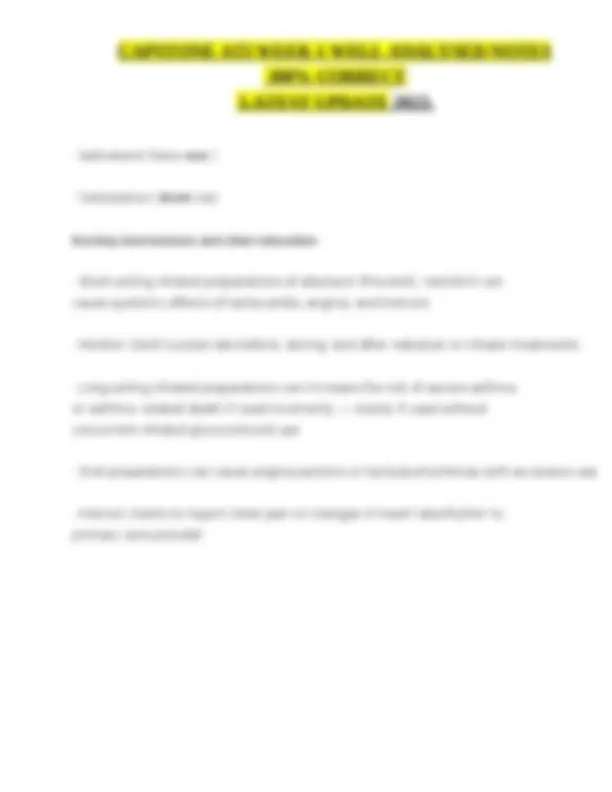
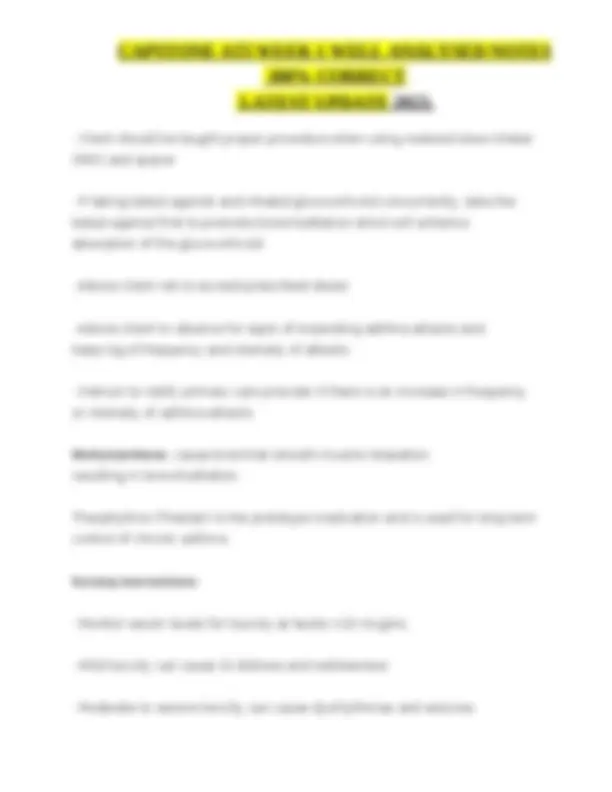
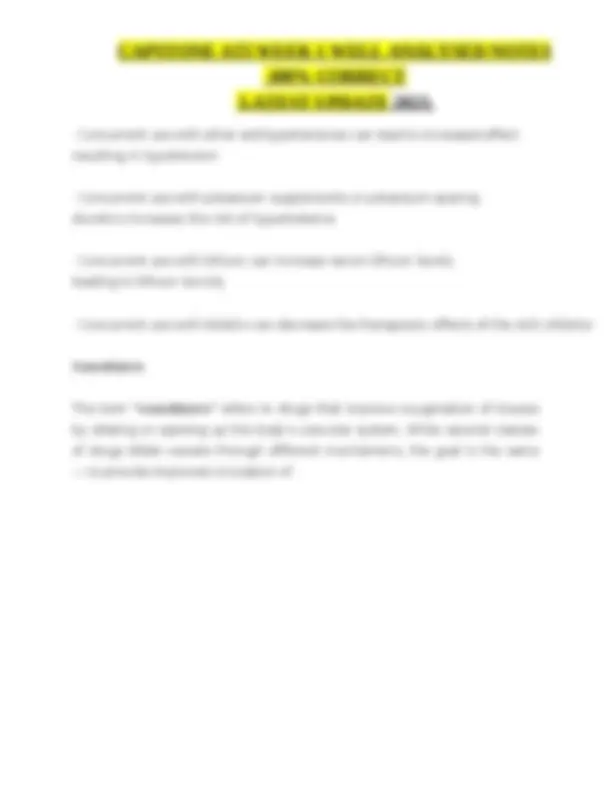
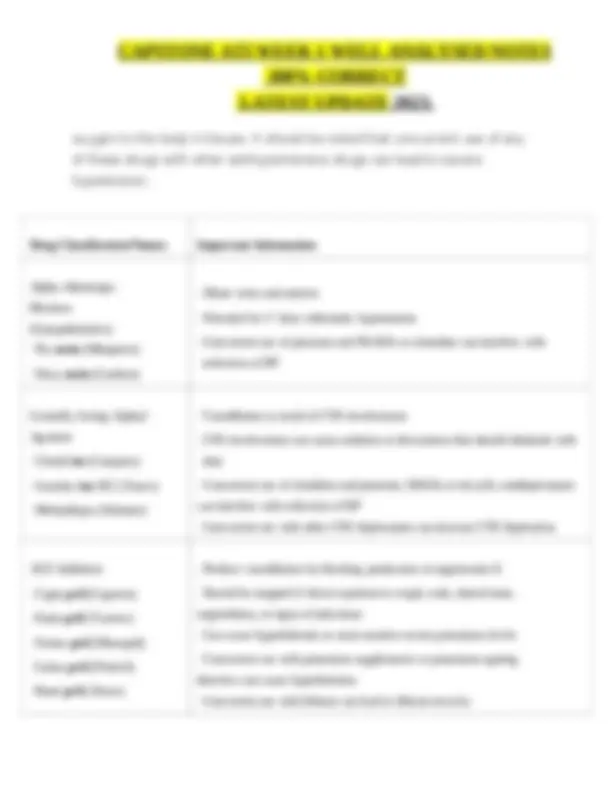

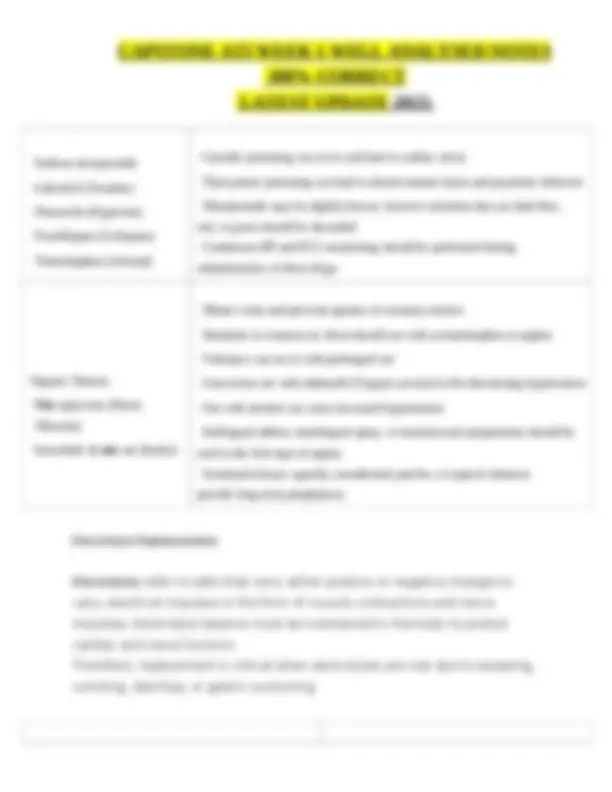
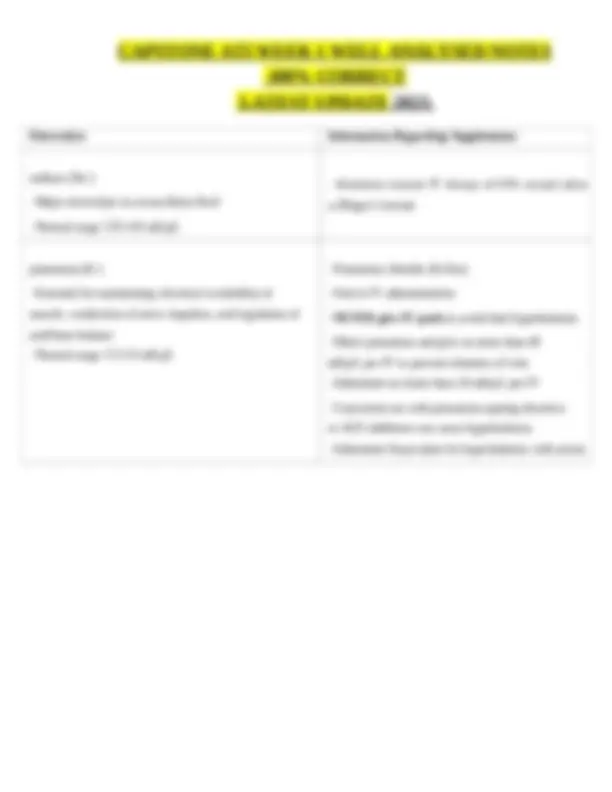
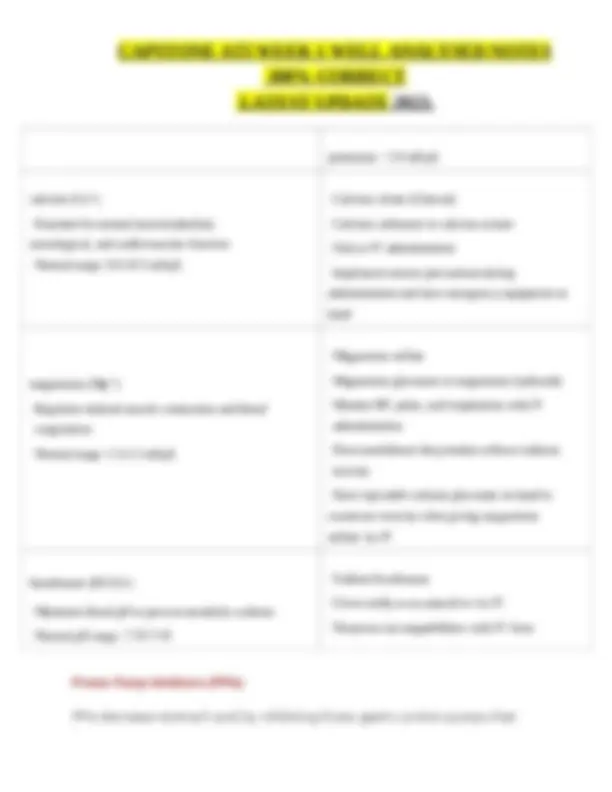
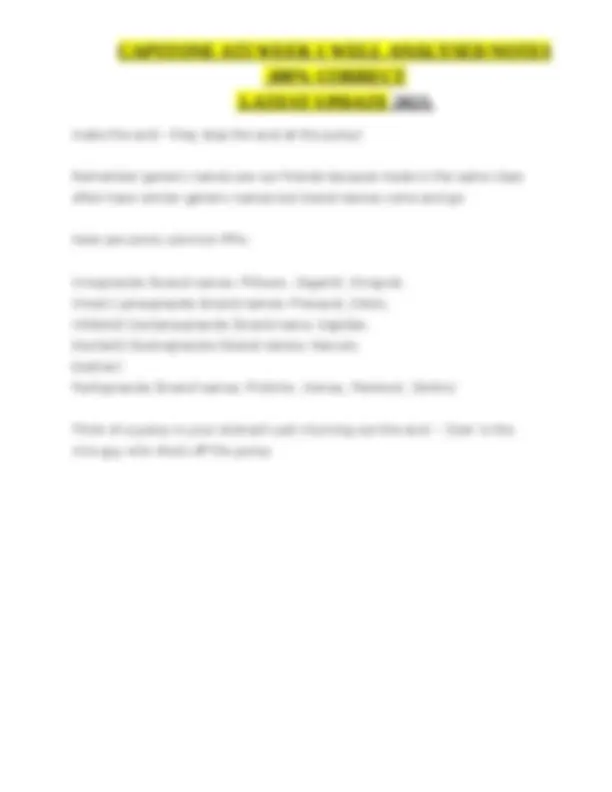
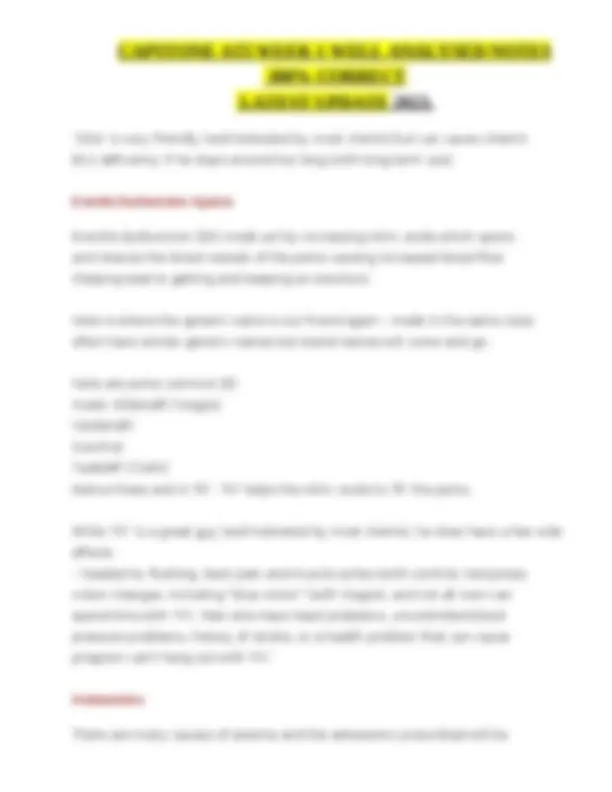
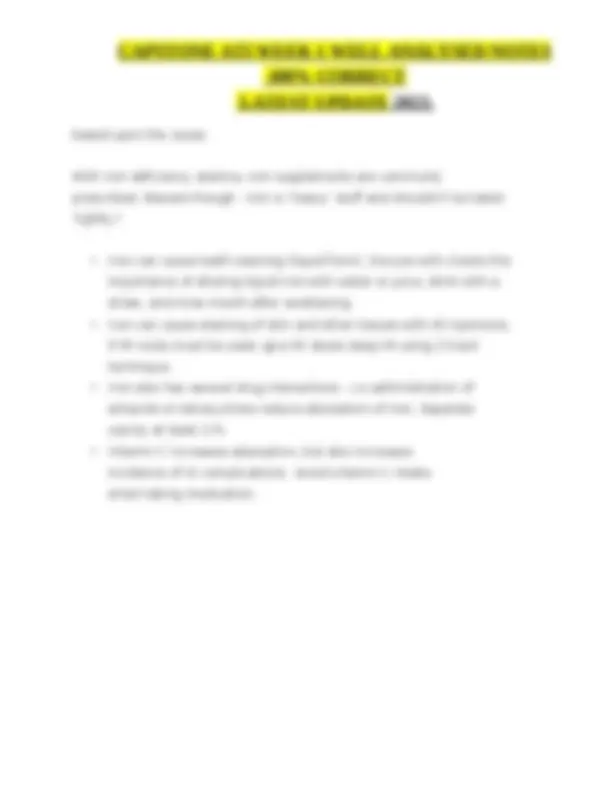
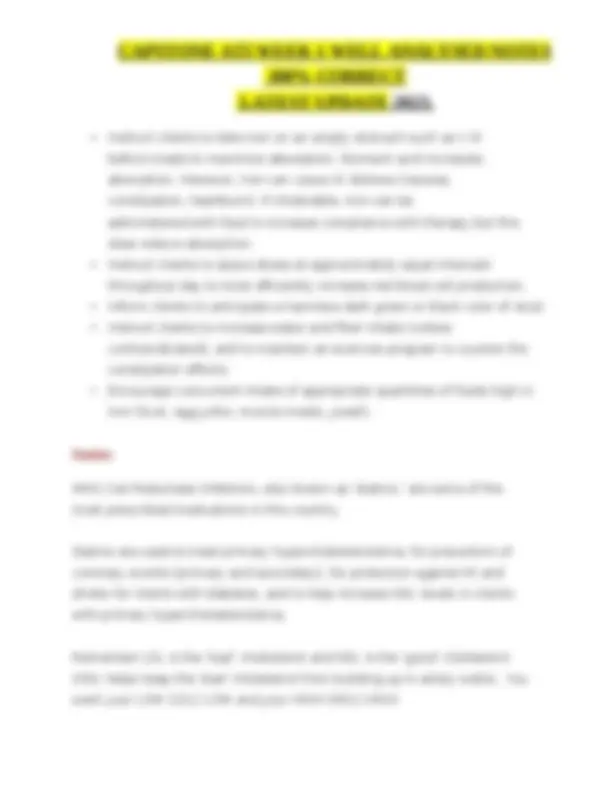
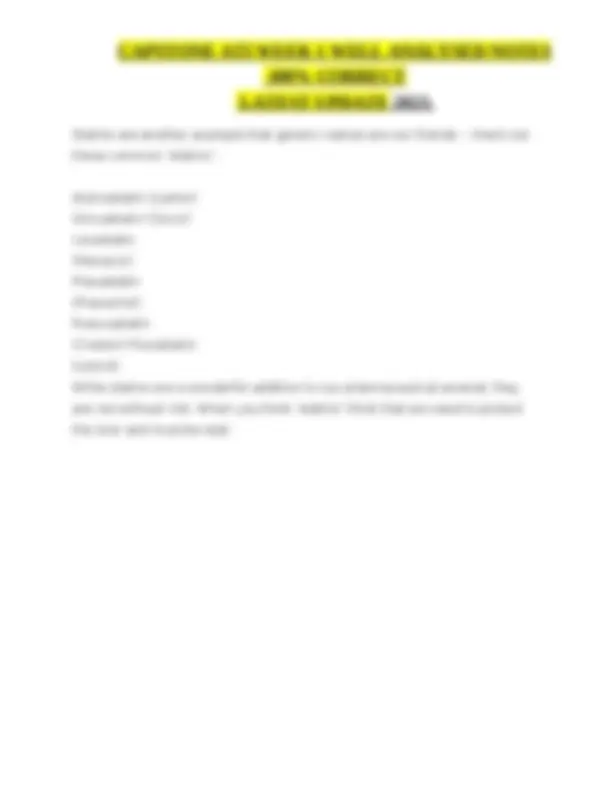

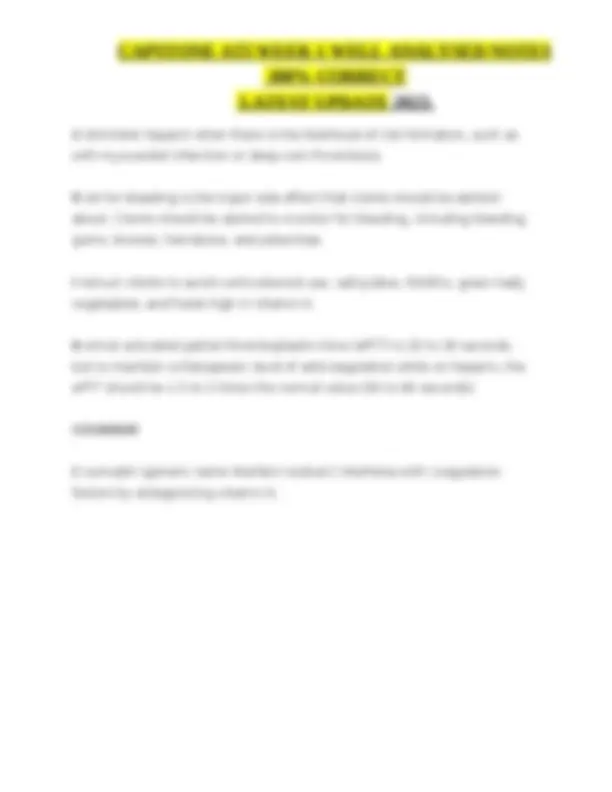
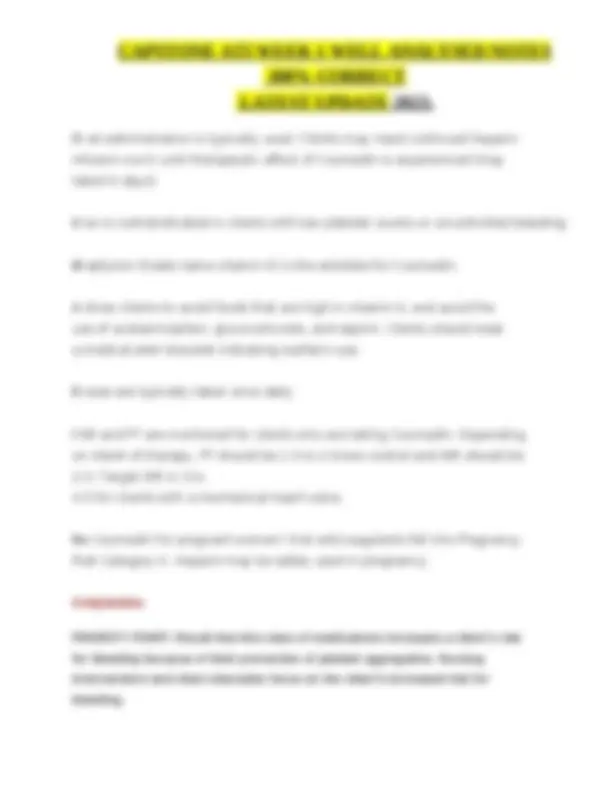
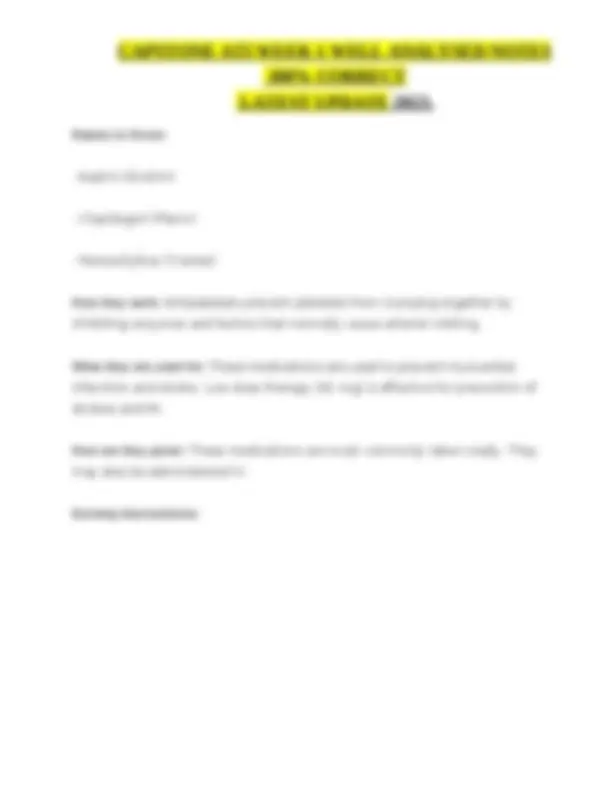
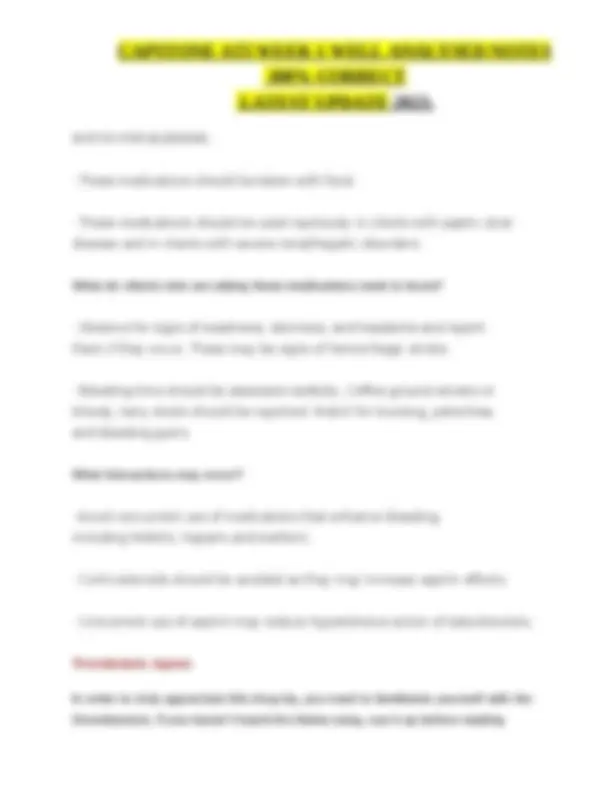
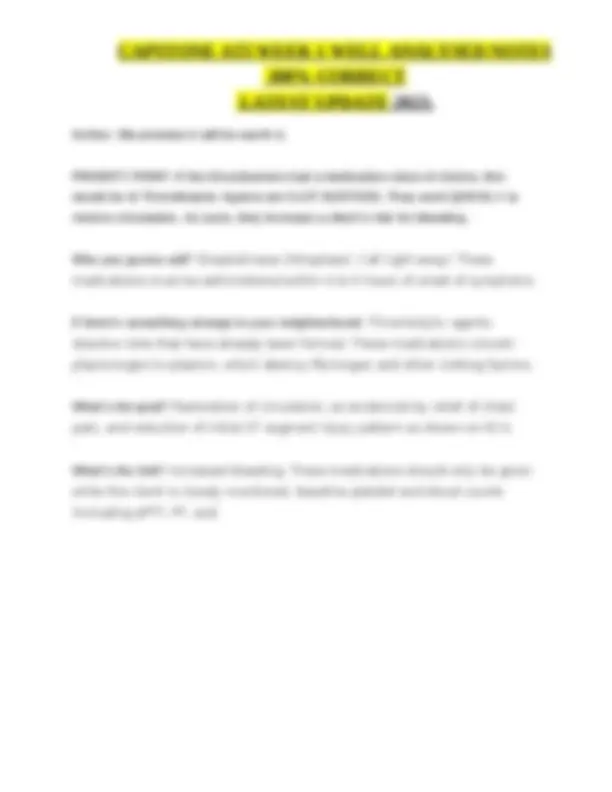
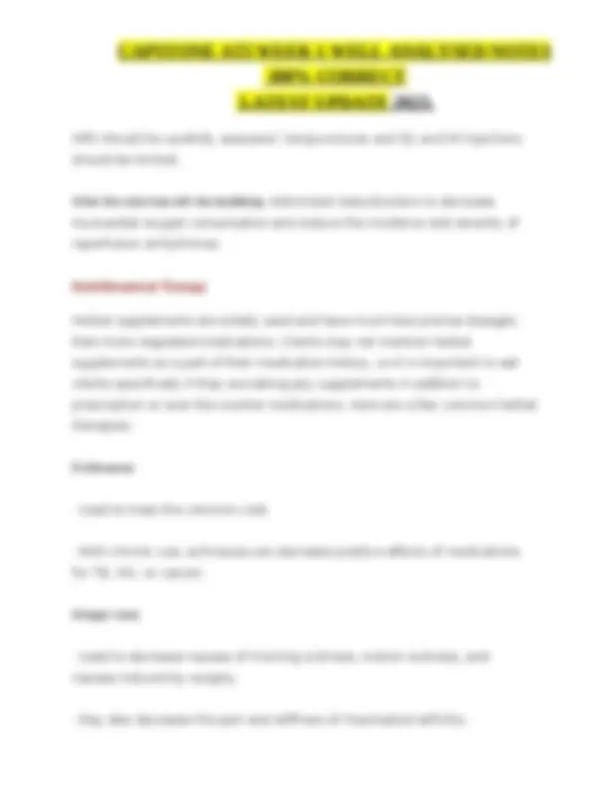
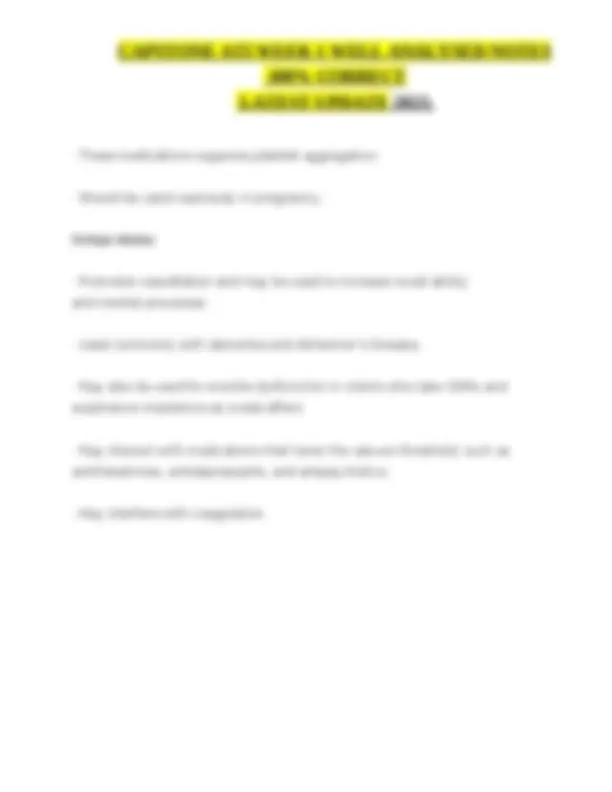
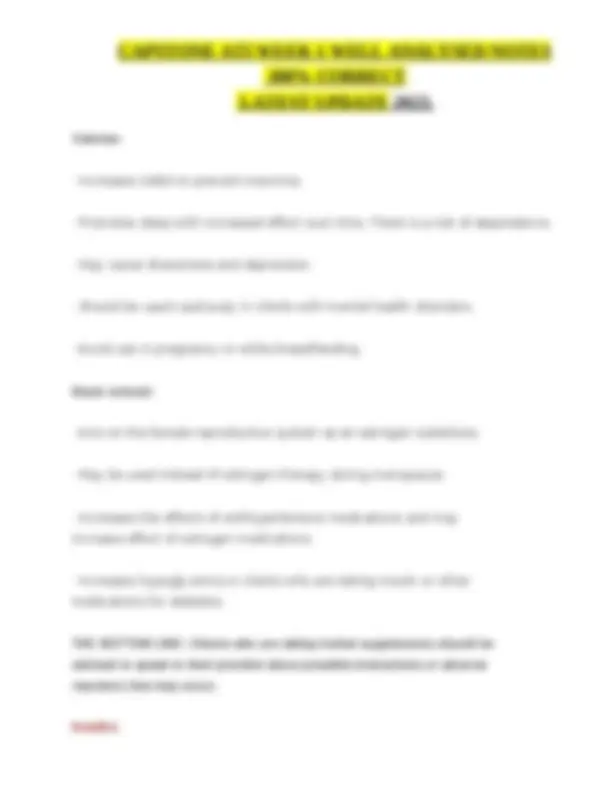
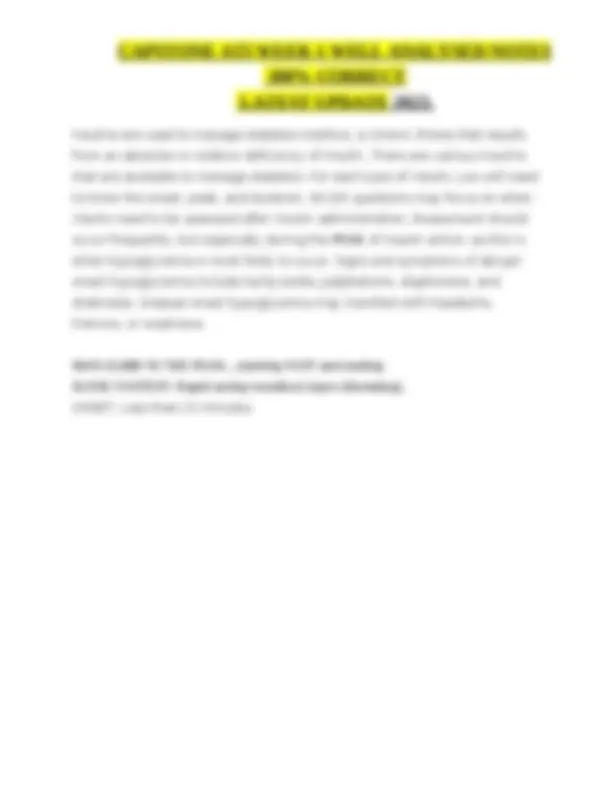
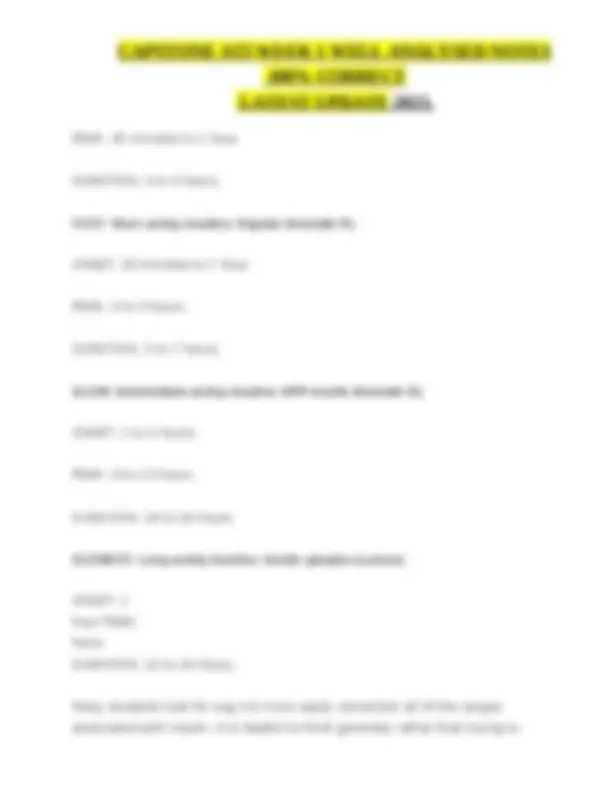
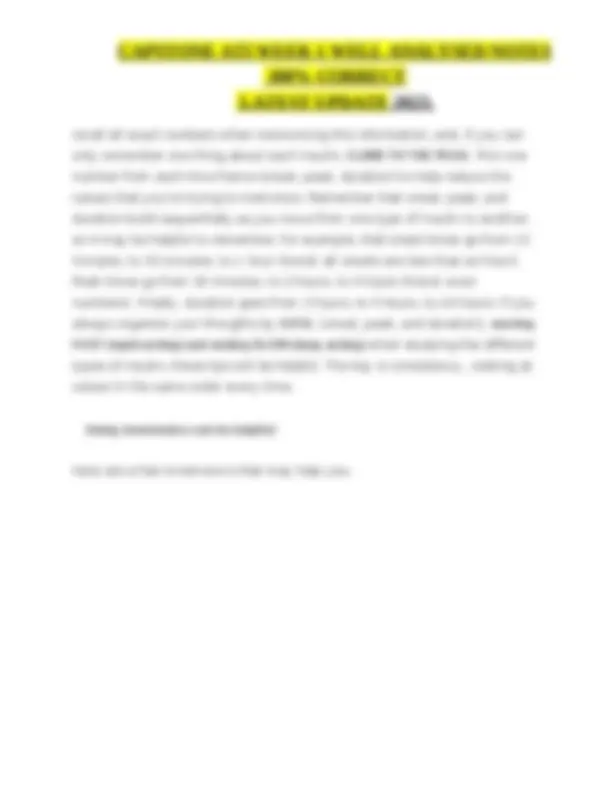
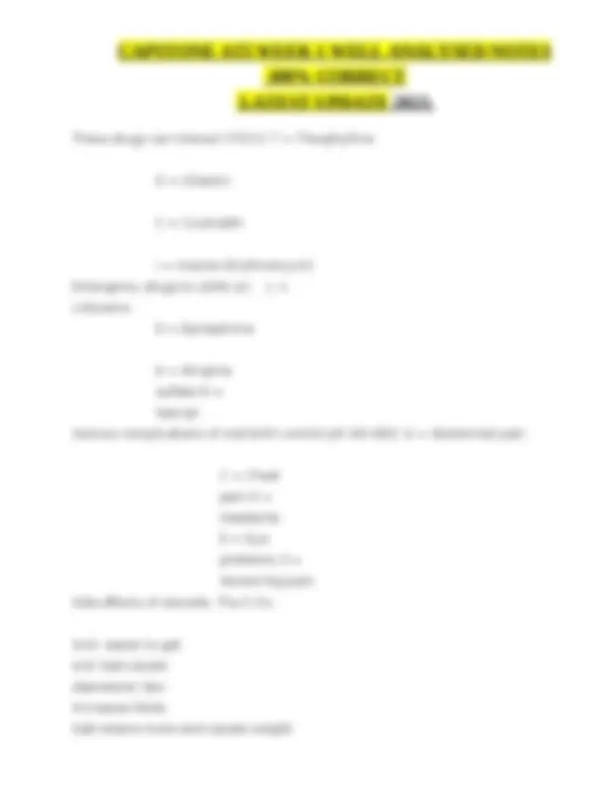
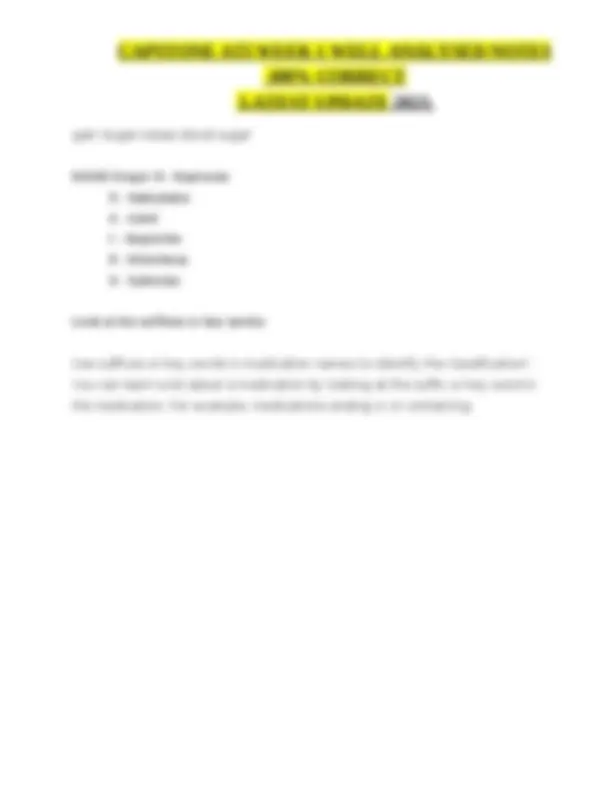
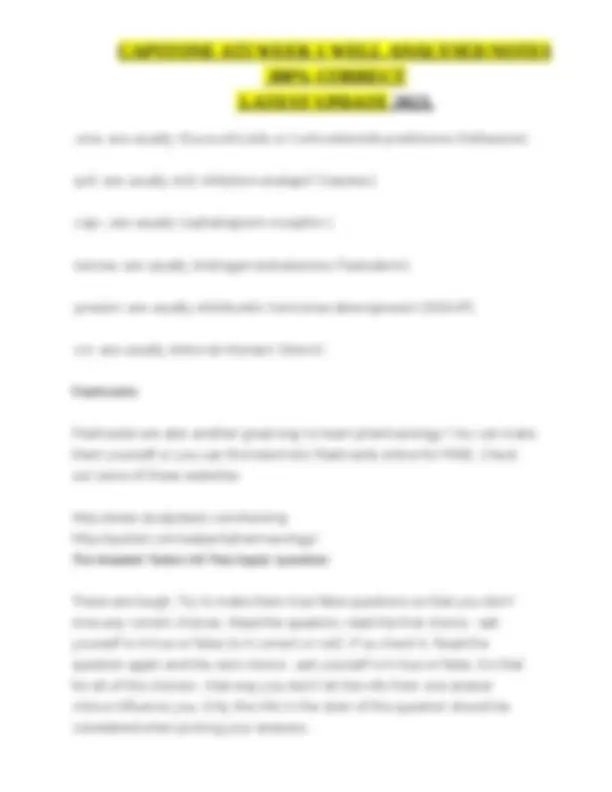
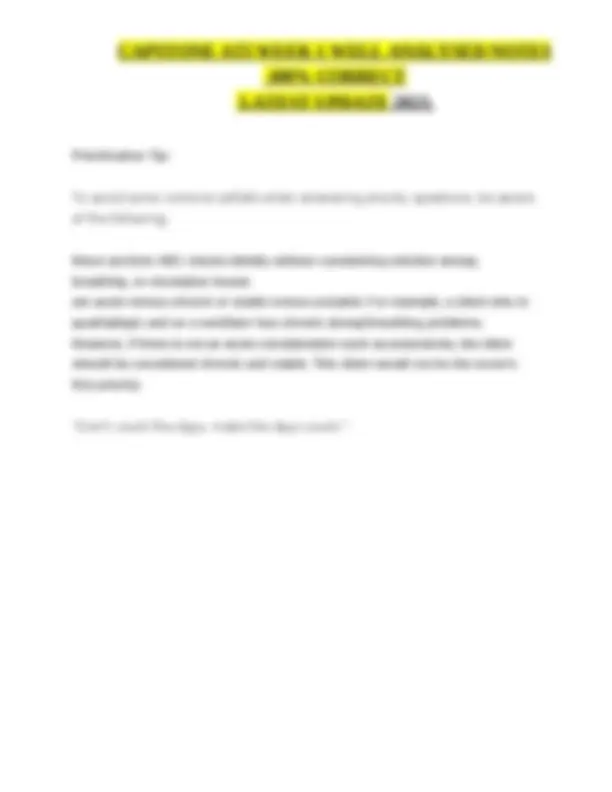
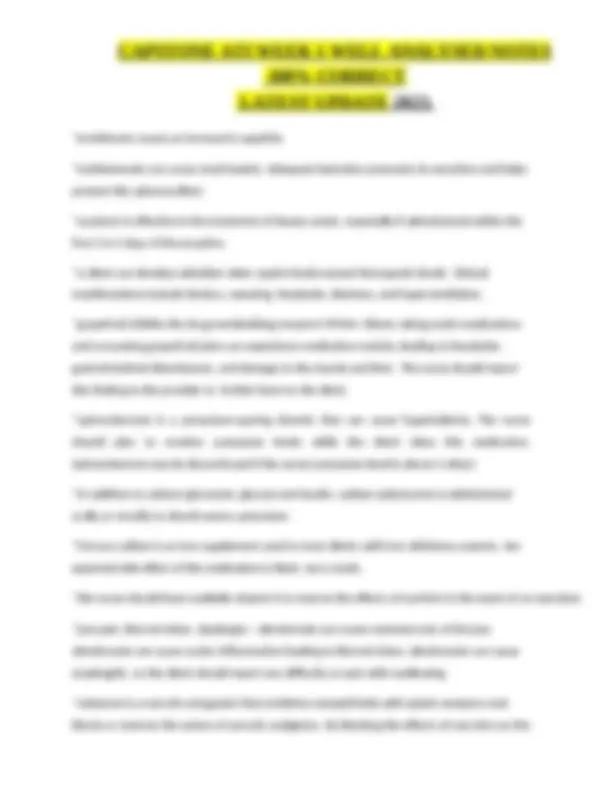
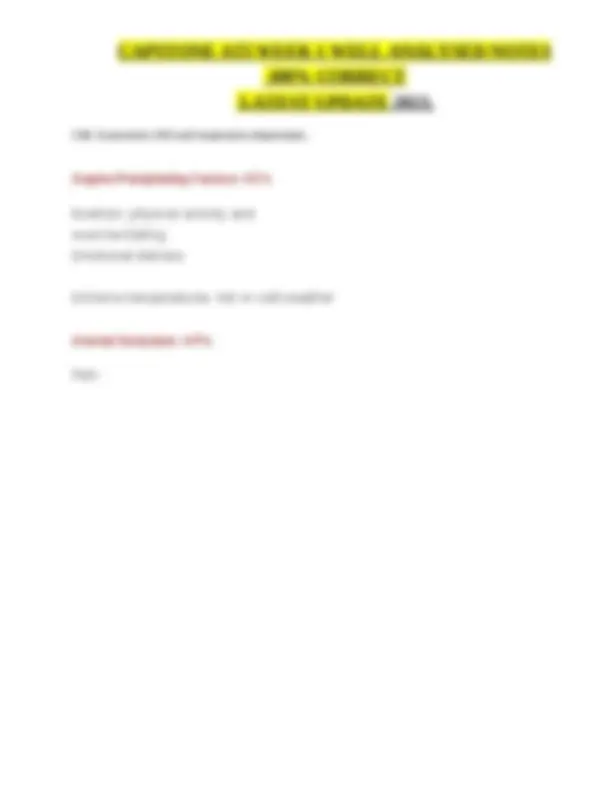
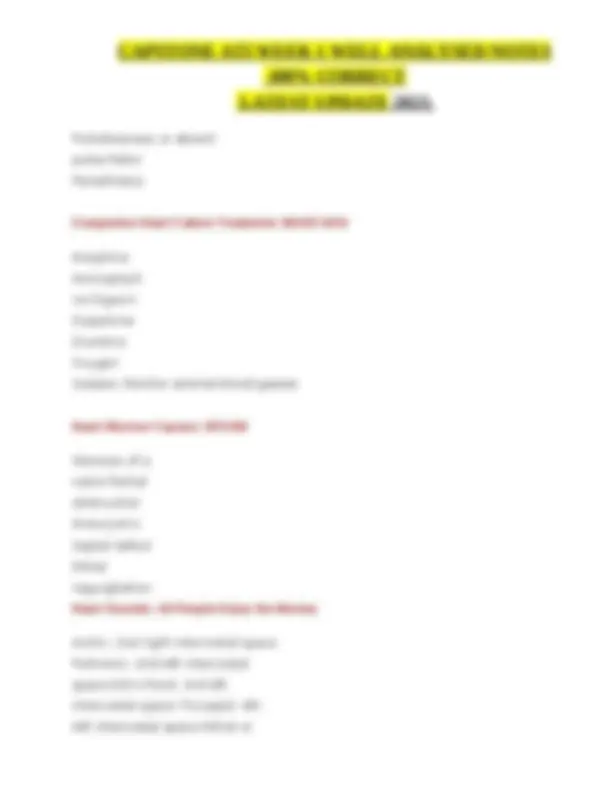

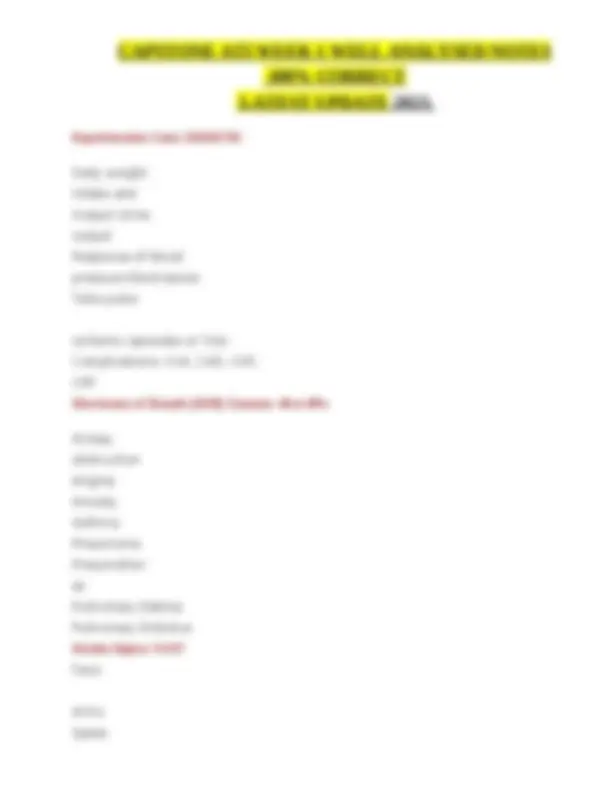

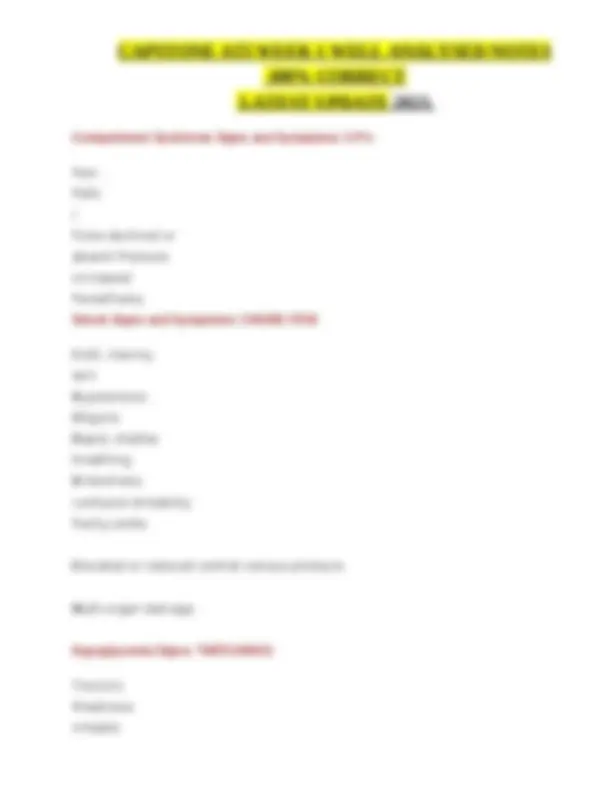

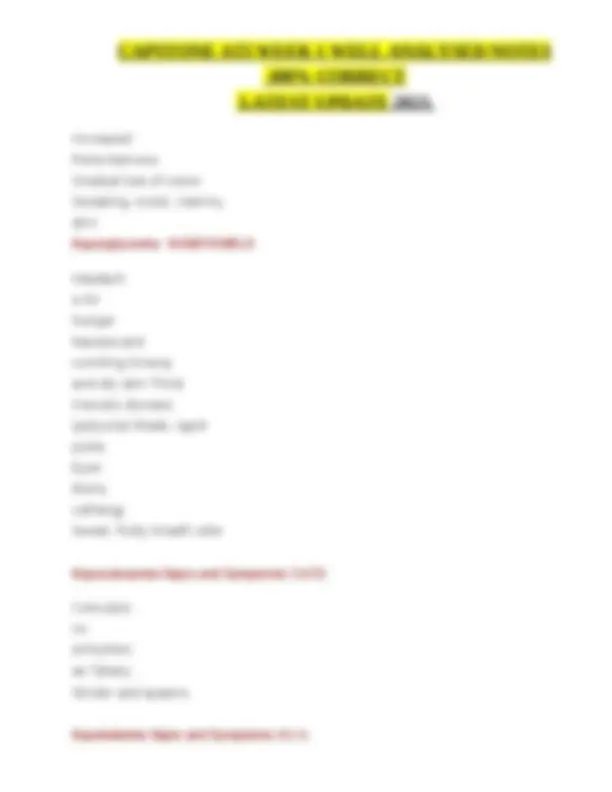

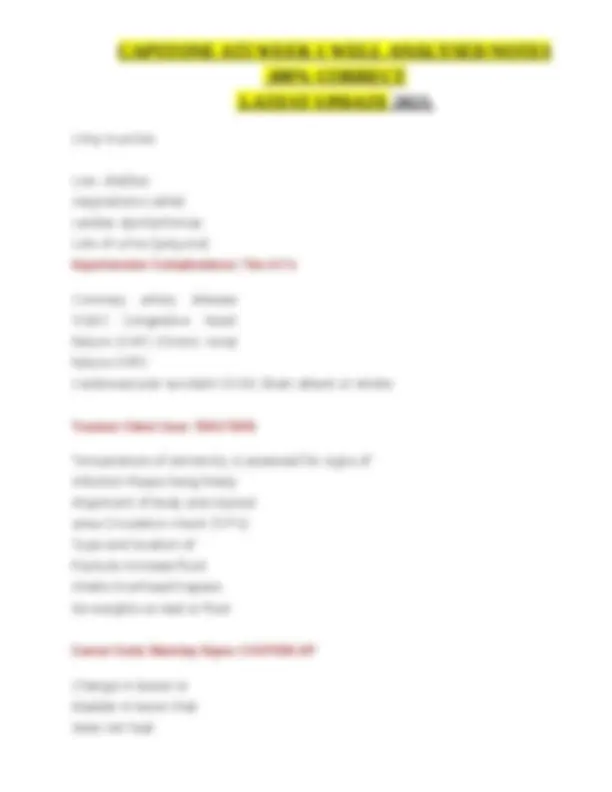

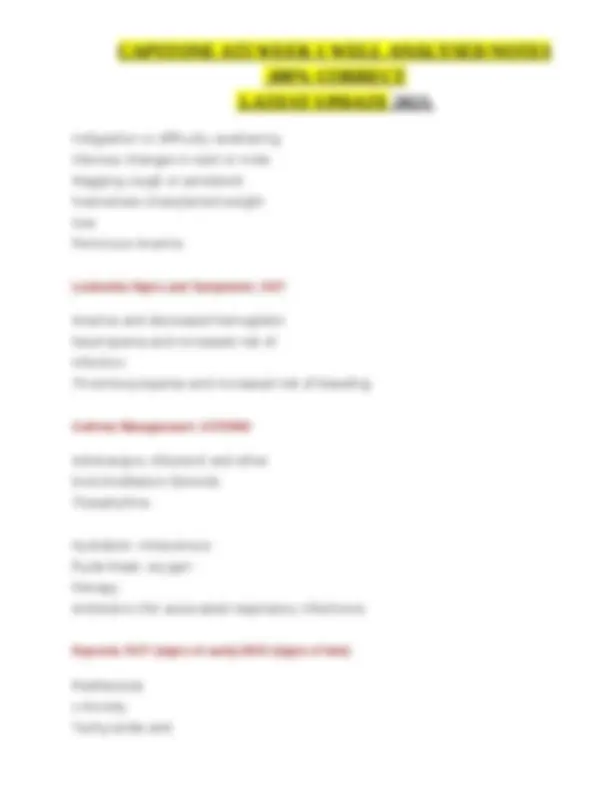

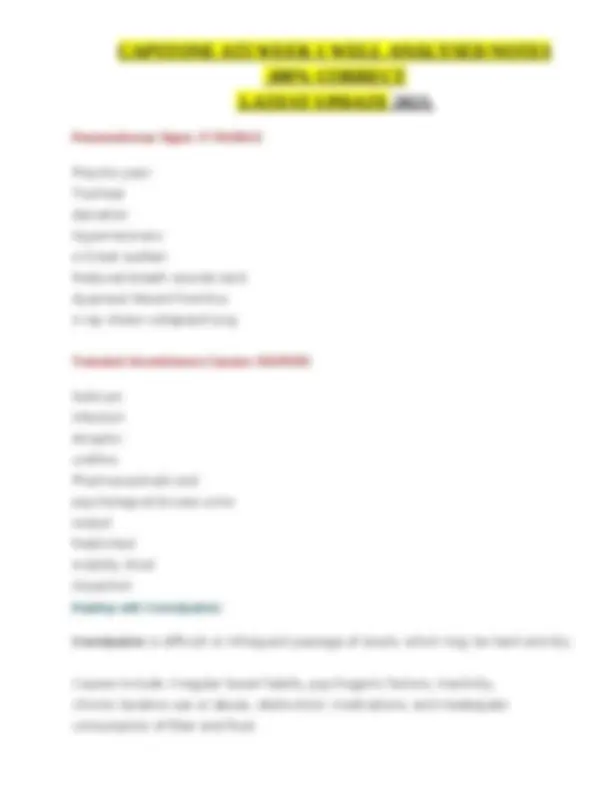
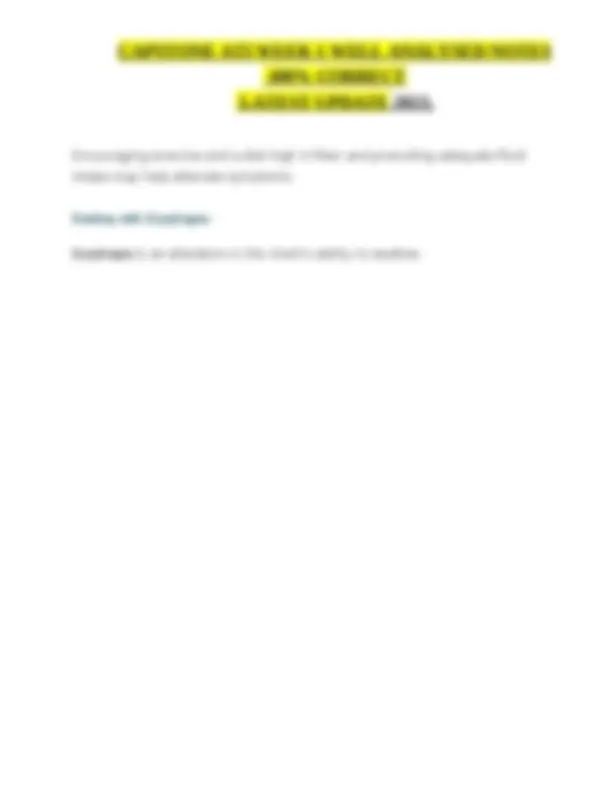
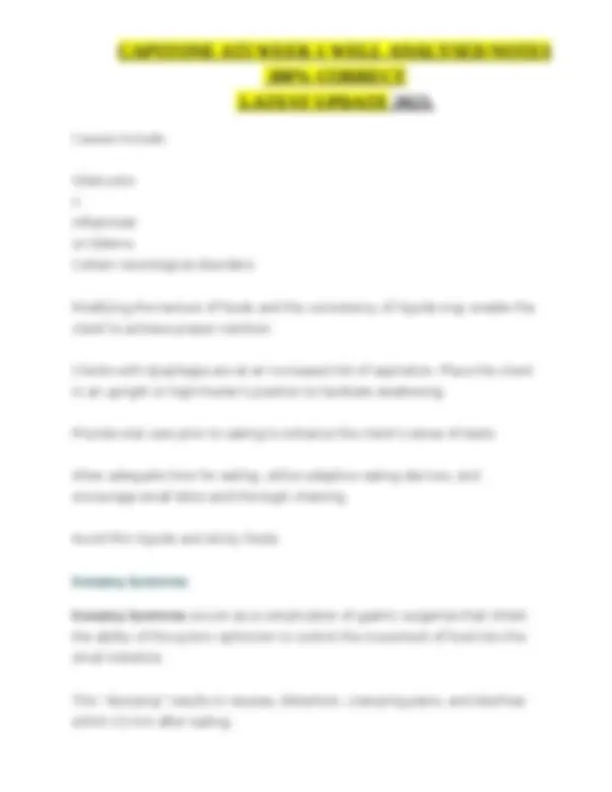
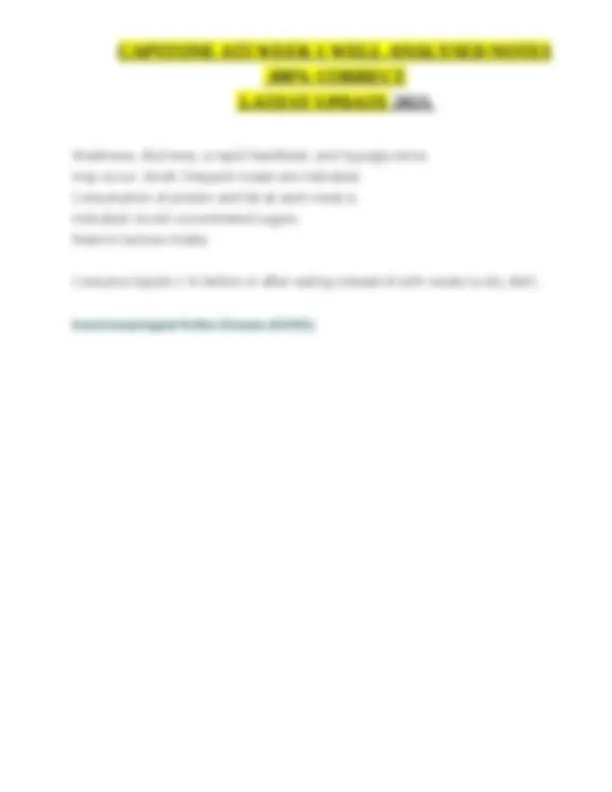
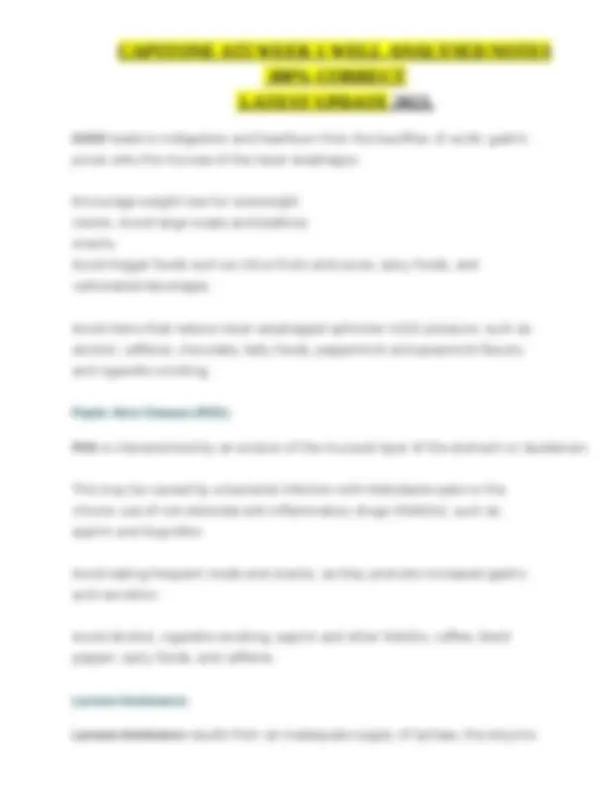
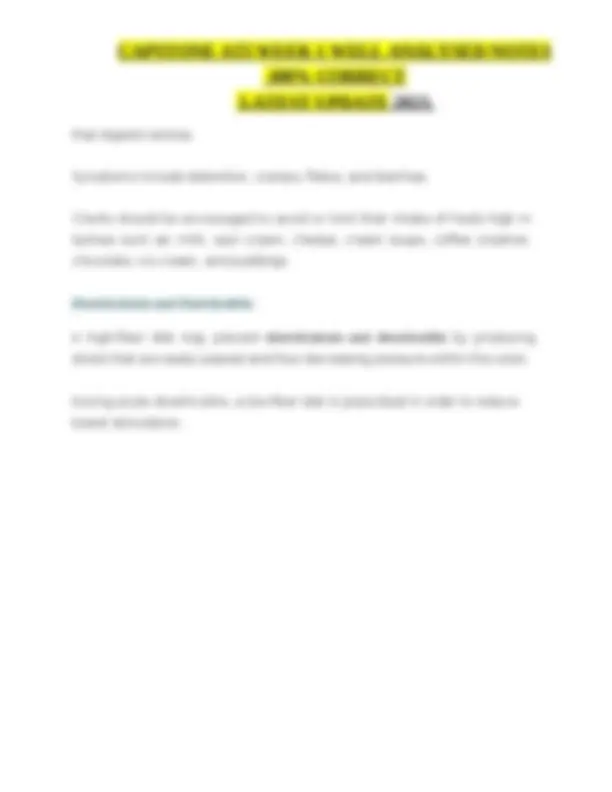
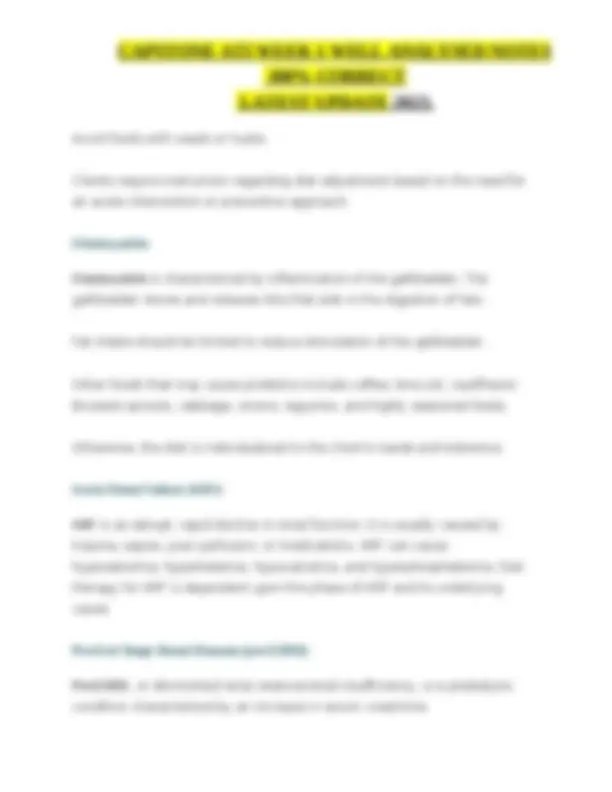
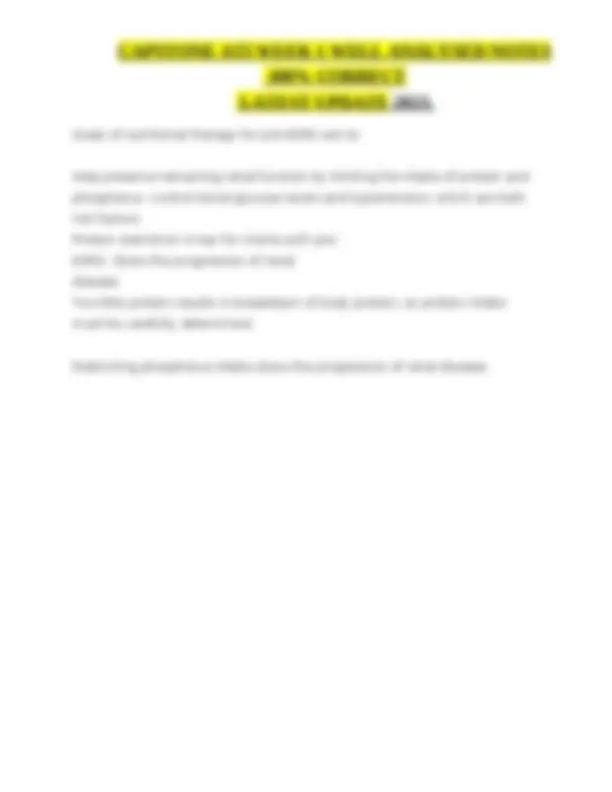
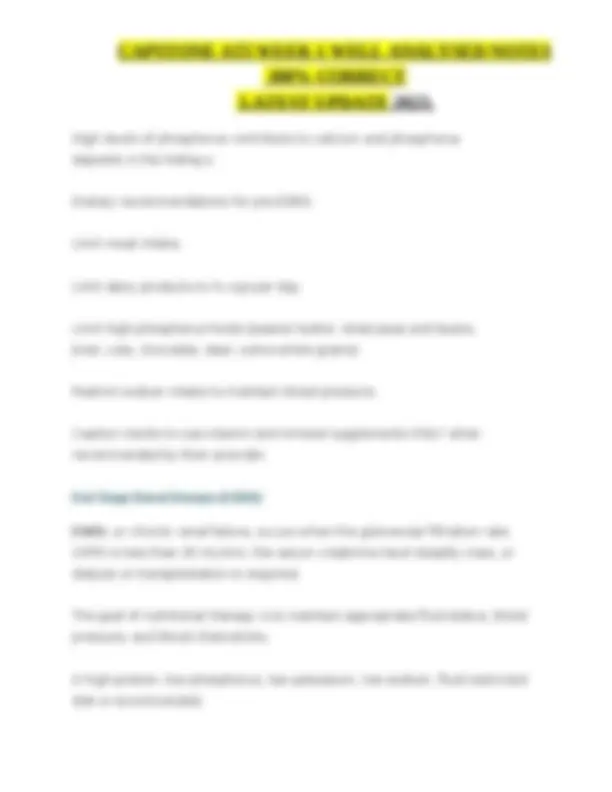
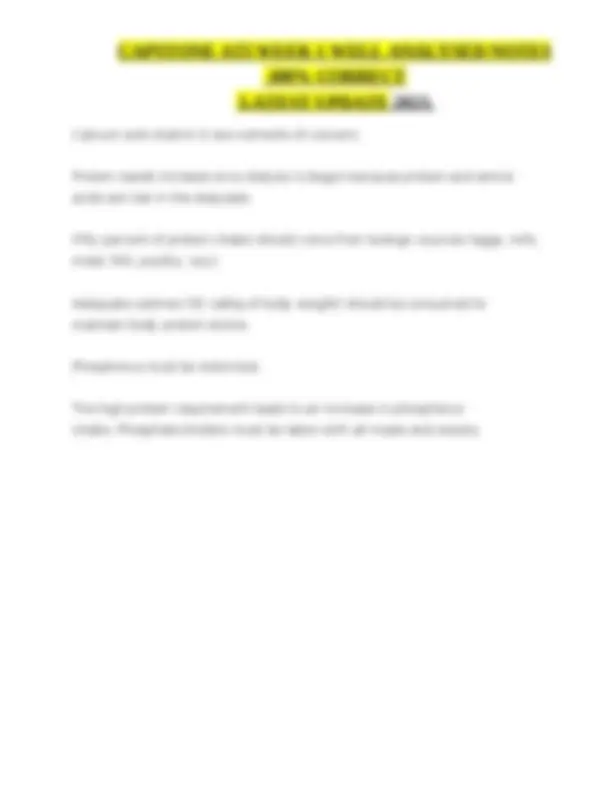
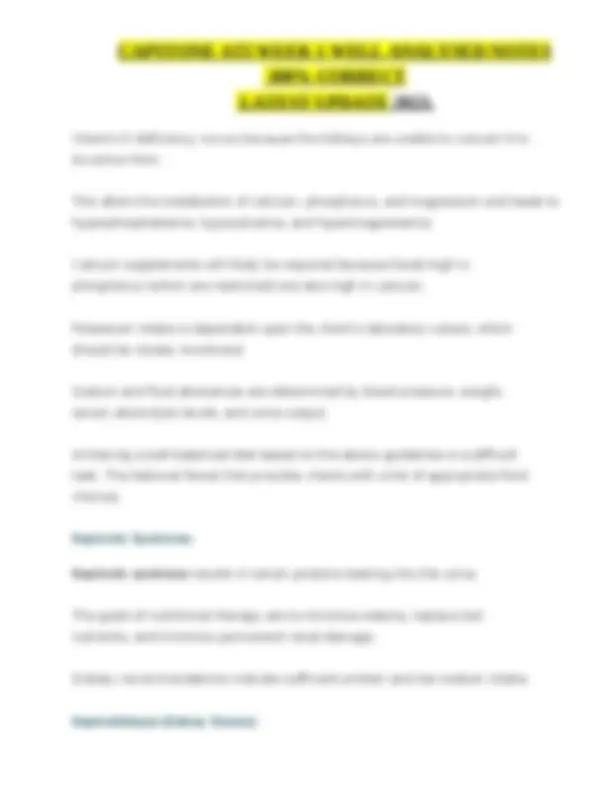
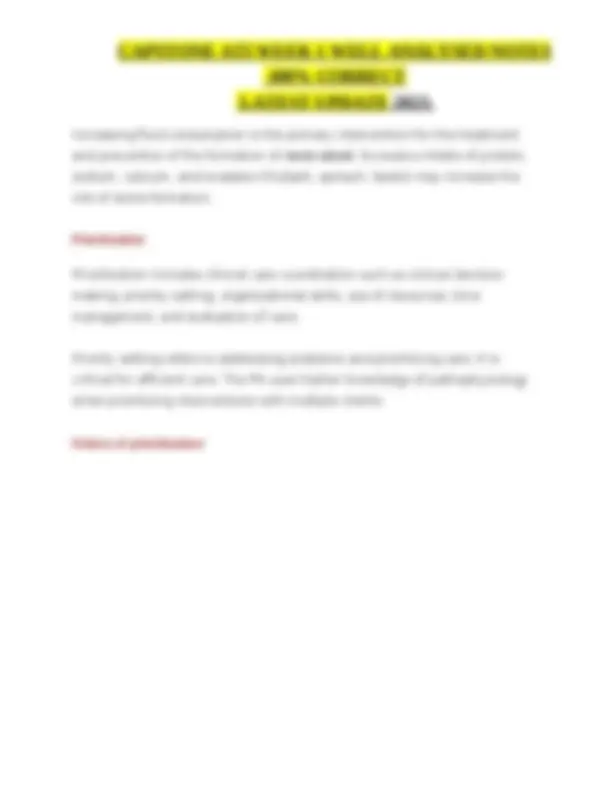
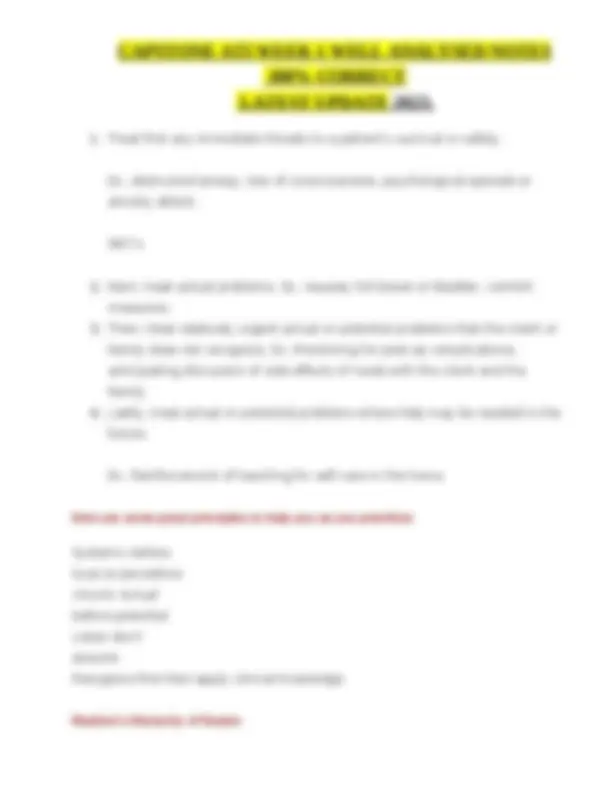
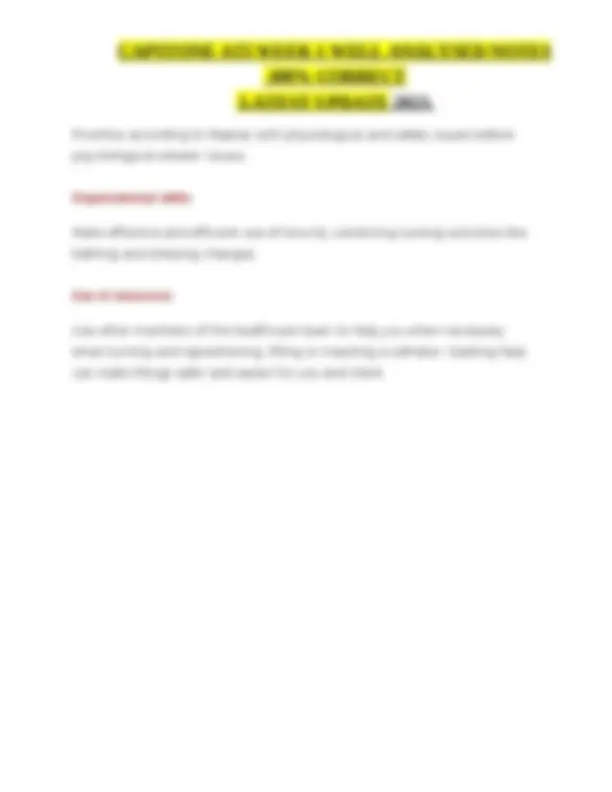
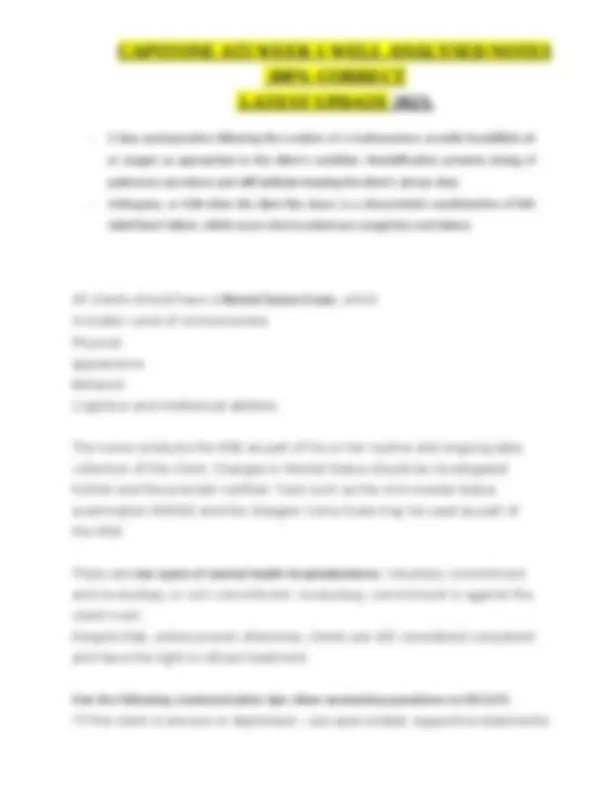
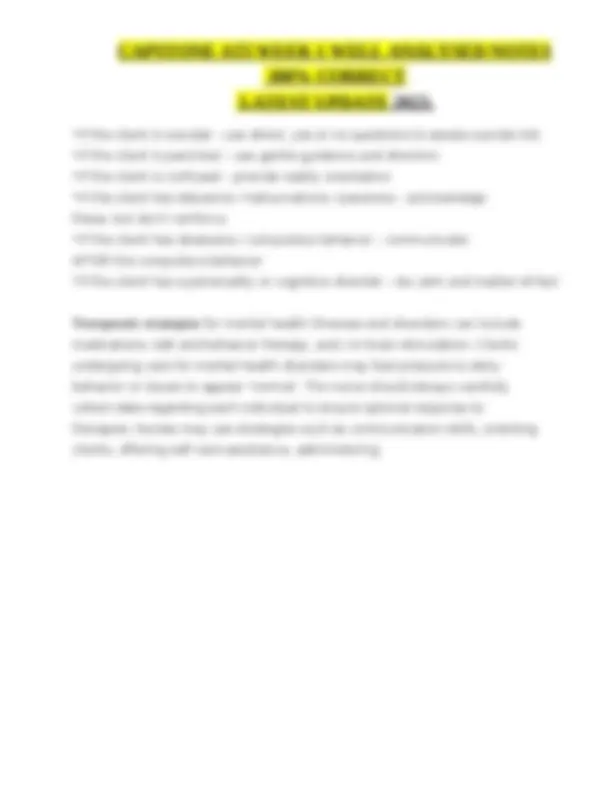
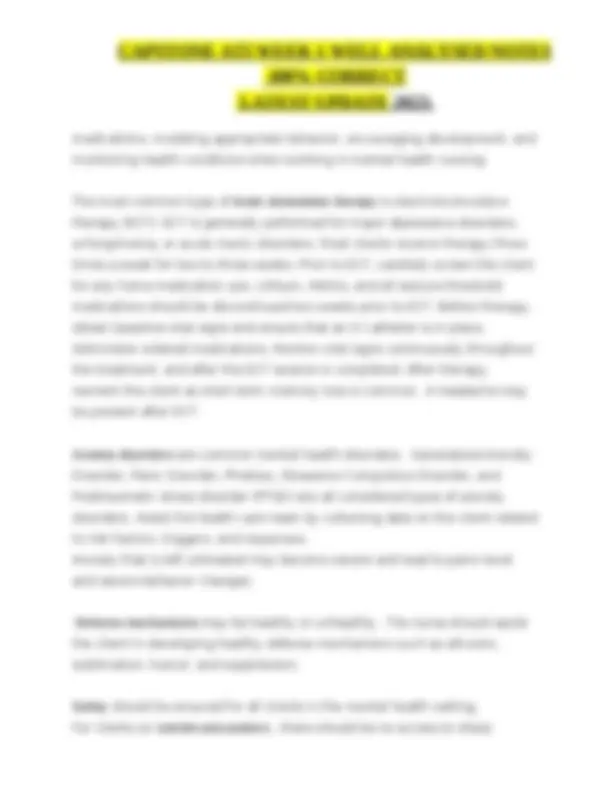
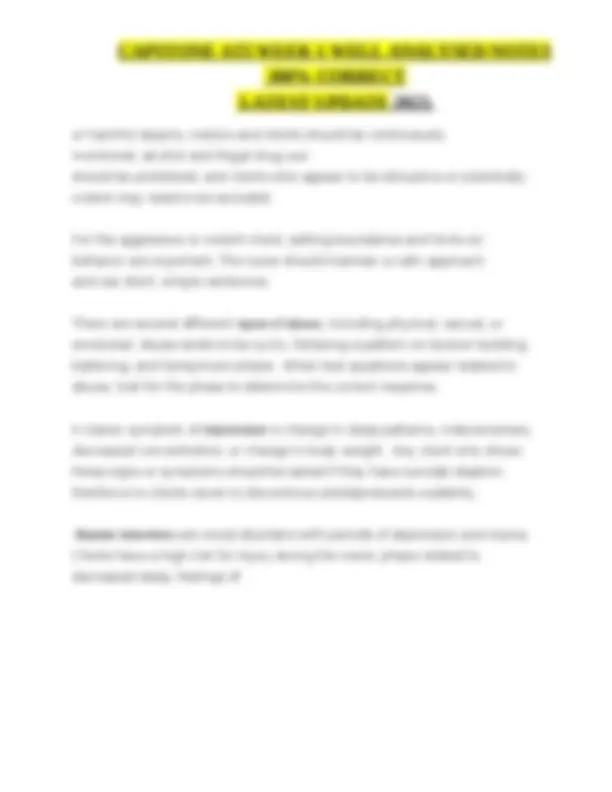
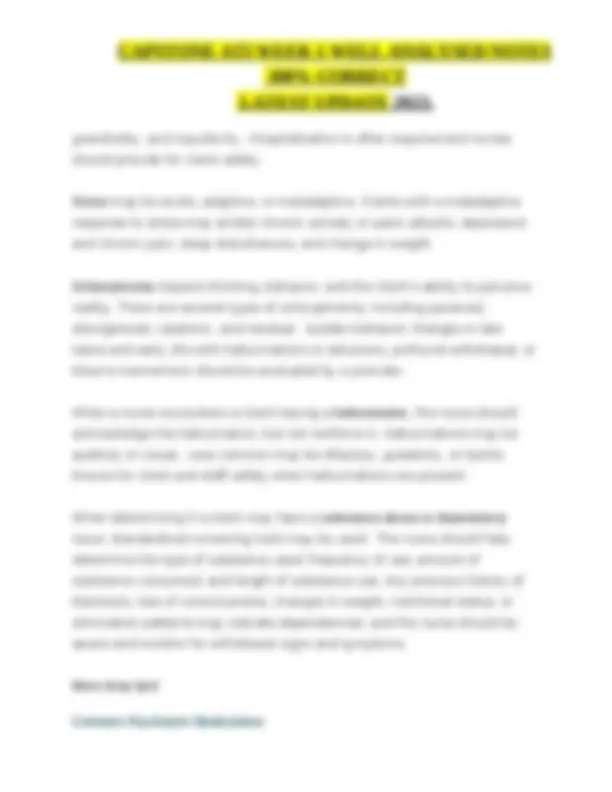
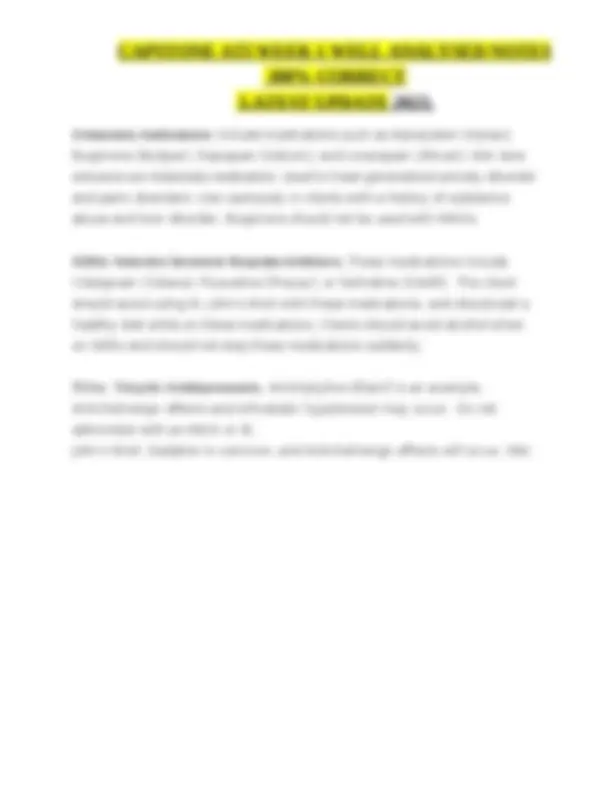
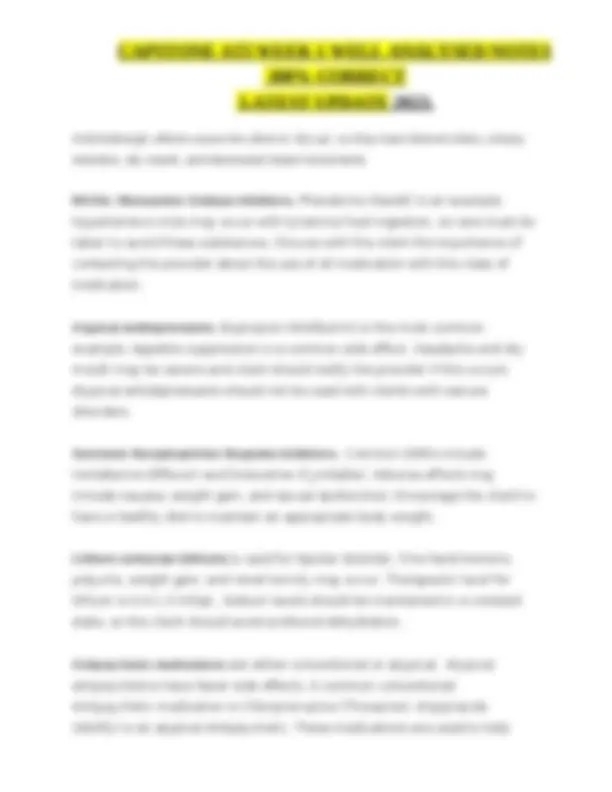
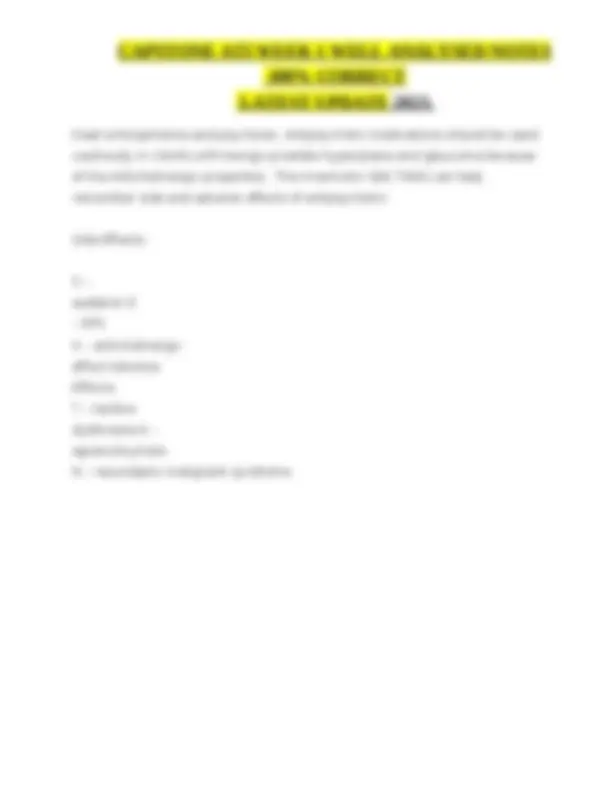
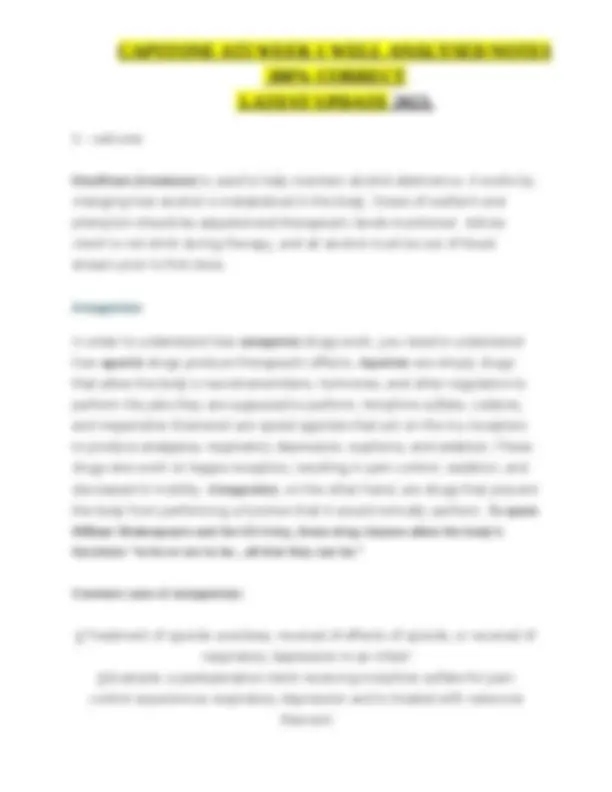
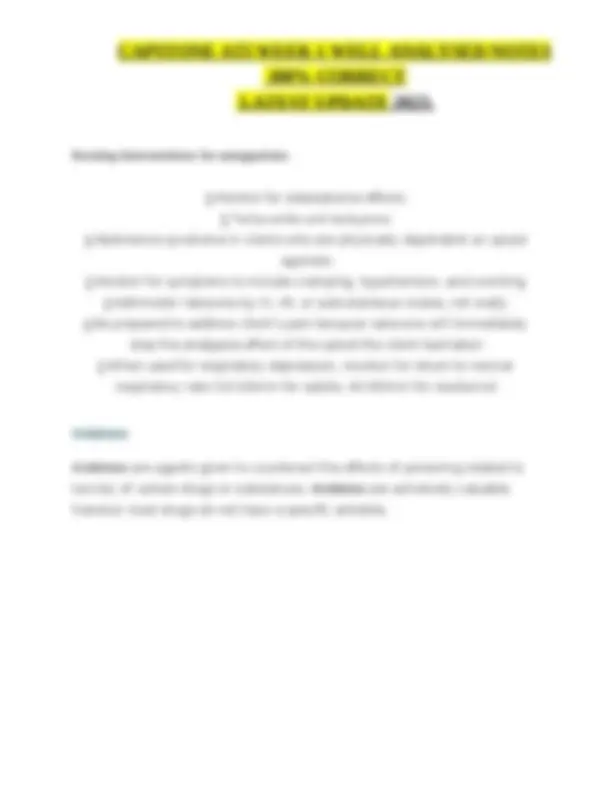
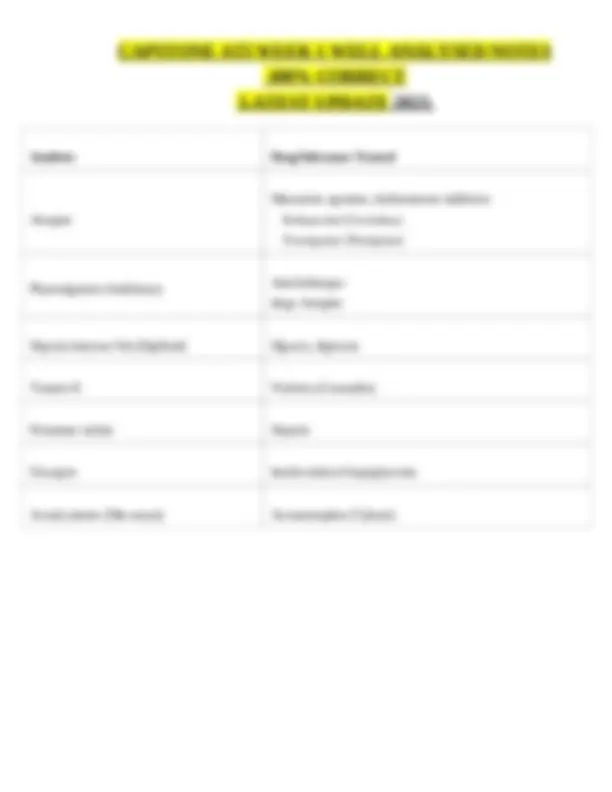


Study with the several resources on Docsity

Earn points by helping other students or get them with a premium plan


Prepare for your exams
Study with the several resources on Docsity

Earn points to download
Earn points by helping other students or get them with a premium plan
Community
Ask the community for help and clear up your study doubts
Discover the best universities in your country according to Docsity users
Free resources
Download our free guides on studying techniques, anxiety management strategies, and thesis advice from Docsity tutors
A weekly review of essential medications, dosages, and potential interactions for individuals managing asthma and hypertension. Topics include proper use of metered dose inhalers, monitoring for signs of impending asthma attacks, potential medication interactions, and side effects of various medications. Additionally, it covers vasodilators, calcium channel blockers, and electrolyte replacements.
Typology: Study notes
1 / 83

This page cannot be seen from the preview
Don't miss anything!












































































Laboratory Values While lab values vary slightly according to the source, knowing an average range for the following common lab tests will be very helpful to you when answering questions. Sodium - 136-145 mEq/L Potassium - 3.5-5.0 mEq/L Total Calcium - 9.0-10.5 mg/dL Magnesium - 1.3-2.1 mg/dL Phosphorus - 3.0 –4.5 mg/dL BUN
pC02 - 35 to 45 mm Hg p02 - 80-100 mmHg HCO3 - 21-26 mmol/L
Management: neg. pressure room, private room, mask, n-95 for TB.
DROPLET: "SPIDERMAn" -Sepsis -Scarlet Fever -Strep -Pertussis -Pneumonia -Parvovirus -Influenza -Diphtheria -Epiglottitis -Rubella -Mumps -Adenovirus Management: Private room/mask CONTACT: "MRS WEE" -MRSA -VRSA -RSV -Skin infections (herpes zoster, cutaneous diphtheria, impetigo, pediculosis, scabies, and staphylococcus) -Wound infections
Americans; history of diabetes mellitus, hypertension or chronic kidney disease.
Test taking tip: Slow Down! Reading questions too quickly can lead to errors. When you are testing, try to slow down a bit so that you do not miss any key words. Before each and every question try this: Take a deep breath in then out. Read the stem of the question, read the choices. REREAD the stem of the question to make sure to understand what is really being asked. Then make your selection. Start the process all over with a deep breath in and out. A nurse is contributing to the plan of care for a client who has a pressure ulcer on his heel. Which of the following information should the nurse include in the plan? Provide the client a diet high in vitamin C. – vit C is essential for wound healing to promote formation of new capillaries, synthesis of new tissue and development of collagen. -trust vs. mistrust -autonomy vs. shame and doubt -Initiative vs. guilt
-industry vs. inferiority -identity vs. role confusion *common manifestations of potassium depletion include a weak and irregular pulse, muscle weakness, fatigue, and ventricular dysrhythmias.
Antiemetics An antiemetic is a medication used in the treatment and/or prevention of nausea and vomiting. Generic names are more consistent, because their endings may be the same, whereas brand names come and go. Here are some common classes of antiemetics and their generic names – notice the similarities in the generic names:
5-HT 3 receptor antagonists (serotonin antagonists) Dolasetron (Anzemet) Granisetron (Kytril, Sancuso) Ondansetron (Zofran) Tropisetron (Navoban) It's ‘Tron’ to the rescue! Dopamine antagonists Promethazine (Phenergan) prochlorperazine (Compazine) Metoclopramide (Reglan). Now this one is different in generic name because it can have some different side effects – watch for extra-pyramidal side effects with metoclopramide. Sometimes the generic names are not as helpful and you have to remember what meds fall under certain classes. Antihistamines and cannabinoids are used as antiemetics as well: Antihistamines (H 1 histamine receptor antagonists) Diphenhydramine (Benadryl) Dimenhydrinate (Gravol, Dramamine) Meclizine (Bonine, Antivert) Cannabinoids
Bronchodilators are used to treat the symptoms of asthma that result from inflammation of the bronchial passages, but they do not treat the inflammation. Therefore, most clients with asthma take an inhaled glucocorticoid concurrently to provide the best outcomes. The two most common classes of bronchodilators are beta2-adrenergic agonists and methylxanthines. Beta2-adrenergic agonists : act upon the beta2-receptors in the bronchial smooth muscle to provide bronchodilation and relieve spasm of the bronchial tubes, inhibit release of histamines, and increase motility of bronchial cilia. These short-acting preparations provide short-term relief during an asthma exacerbation, while the long- acting preparations provide long-term control of asthma symptoms. The generic names for the inhaled form of these drugs end in“terol” = “ T aking E ases R espiratory distress o r L abored breathing” · Albu terol (Proventil, Ventolin) · Formo terol (Foradil Aerolizer) · Salme terol (Serevent) The brand names of some drugs in this class provide a hint as well because they contain the words “ vent ” or “ breth ” referring to ventilation or breathing: · Albuterol (Pro vent il, Vent olin)
· Salmeterol (Sere vent ) · Terbutaline ( Breth ine) Nursing interventions and client education: · Short-acting inhaled preparations of albuterol (Proventil, Ventolin) can cause systemic effects of tachycardia, angina, and tremors. · Monitor client’s pulse rate before, during, and after nebulizer or inhaler treatments · Long-acting inhaled preparations can increase the risk of severe asthma or asthma- related death if used incorrectly — mainly if used without concurrent inhaled glucocorticoid use · Oral preparations can cause angina pectoris or tachydysrhythmias with excessive use · Instruct clients to report chest pain or changes in heart rate/rhythm to primary care provider
· Educate client regarding potential medication and food interactions that can affect serum theophylline levels · Caffeine, cimetidine (Tagamet), and ciprofloxacin (Cipro) can increase levels · Phenobarbital and phenytoin can decrease levels ACE Inhibitors ACE inhibitors block the production of angiotensin II which results in vasodilation, sodium and water excretion, and potassium retention. Drugs in this class are used for treating heart failure, hypertension, myocardial infarction, and diabetic or nondiabetic nephropathy. Clients taking captopril (Capoten) should be instructed to take med at least 1 hour before meals; all other ACE inhibitors are not affected by food. The generic names of ACE inhibitors end in “pril”: · Capto pril (Capoten)
· Enala pril (Vasotec) · Fosino pril (Monopril) · Lisino pril (Prinivil) · Rami pril (Altace) Side/adverse effects includ e: · Orthostatic hypotension with first dose - Instruct client to monitor BP for at least 2 hours after first dose · Cough, rash, or altered or distorted taste (dysgeusia) - Instruct client to notify health care provider · Angioedema - Treated with epinephrine and symptoms will resolve once medication is stopped · Neutropenia is rare but serious with captopril (Capoten) - Instruct client to report signs of infection Hyperkalemia can be life-threatening - Monitor potassium levels to maintain normal range of 3.5-5.0 mEq/L Medication/food interactions : · Concurrent use with diuretics can lead to first-dose orthostatic hypotension
oxygen to the body’s tissues. It should be noted that concurrent use of any of these drugs with other antihypertensive drugs can lead to severe hypotension. Drug Classification/Names Important Information Alpha-Adrenergic Blockers (Sympatholytics) · Pra zosin (Minipress) · Doxa zosin (Cardura) · Dilate veins and arteries · Potential for 1 st^ dose orthostatic hypotension · Concurrent use of prazosin and NSAIDs or clonidine can interfere with reduction of BP Centrally Acting Alpha Agonists · Clonid ine (Catapres) · Guanfac ine HCl (Tenex) · Methyldopa (Aldomet) · Vasodilation is result of CNS involvement · CNS involvement can cause sedation or drowsiness that should diminish with time · Concurrent use of clonidine and prazosin, MAOIs or tricyclic antidepressants can interfere with reduction of BP · Concurrent use with other CNS depressants can increase CNS depression ACE Inhibitors · Capto pril (Capoten) · Enala pril (Vasotec) · Fosino pril (Monopril) · Lisino pril (Prinivil) · Rami pril (Altace) · Produce vasodilation by blocking production of angiotensin II · Should be stopped if client experiences cough, rash, altered taste, angioedema, or signs of infections · Can cause hyperkalemia so must monitor serum potassium levels · Concurrent use with potassium supplements or potassium-sparing diuretics can cause hyperkalemia · Concurrent use with lithium can lead to lithium toxicity
Angiotensin II Receptor Blockers · Lo sartan (Cozaar) · Val sartan (Diovan) · Irbe sartan (Avapro) · Cande sartan (Atacand) · Olme sartan (Benicar) · Produce vasodilation by blocking the action of angiotensin II · Can cause angioedema · Fetal injury can result if used by pregnant women during 2 nd^ and 3 rd^ trimester Calcium Channel Blockers · Nife dipine (Adalat, Procardia) · Amlo dipine (Norvasc) · Felo dipine (Plendil) · Nicar dipine (Cardene) · Verapamil (Calan) · Diltiazem (Cardizem) · Vasodilation is result of blocking of calcium channels in blood vessels · Risk of reflex tachycardia, peripheral edema, and acute toxicity with nifedipine · Risk of orthostatic hypotension, peripheral edema, constipation, bradycardia, dysrhythmias, and acute toxicity with verapamil and diltiazem · Drinking grapefruit juice can lead to toxicity · Concurrent use of digoxin with verapamil can lead to digoxin toxicity Medication for Hypertensive Crisis · Provide direct vasodilation of veins and arteries and rapid reduction of BP